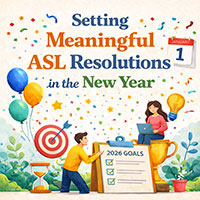Conceptually Correct Signs
Consider the following sentences:
I won’t stand for this!
You need to stand up please.
This flag stands for freedom.
In each of these statements the word STAND is used. It is spelled the exact same way, pronounced the exact same way, yet it has VERY different meanings in each of it’s uses above.
Now one form of sign language, Signing Exact English, would tell you to sign the word STAND the same in all three sentences because of their 2 out of 3 rule. (If the word is spelled the same and pronounced the same, then you can sign it the same.) Our philosophy here at Signing Savvy, DOES NOT endorse that way of thinking. We feel that signing things conceptually correct is EXTREMELY important! This is one of the big differences between American Sign Language (ASL) and Signed Exact English.
With that said….let us look back at the three example sentences listed above.
I won’t stand (put up with, or accept) this!
You need to stand (to stand up) up please.
This flag stands (represents) for freedom.
You would want to sign the sentences using the meanings of the words. Those meanings are found in the parenthesis. The sentences that come off the lips would still be using the word STAND but the sign would correspond with the meaning.
Just a quick note about the Signing Savvy Phrase Builder - the phrase builder doesn’t have the intelligence to know what the true conceptual meaning of the words you typed in the search box are. It will simply give you the first variation of the sign for the word you entered. However, you can modify the resulting sign video using the tools in the phrase builder (see the video on the phrase builder for details).
Please consider this, and make sure your phrases are conceptually correct, when you are using the phrase builder OR translating from English to ASL on your own. Happy Signing! John.
ADVERTISEMENTS








Savvy User AnthonySunday, November 15, 2009
I use the flash cards to practice. When I come across a sign that does not match my book, I'd like to be able to add a discription for the word. Right now, I use the fingerspelled form but I have to refer to my book when I come to that word. For example, the word complete can mean entire or all (variant not shown in your dictionary). If I could add a discription that would show with the flash cards, I would know that the word is the same as the sign for 'all'.